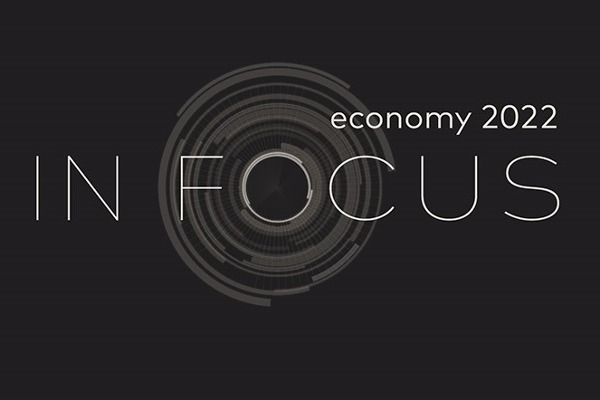Looking Ahead To 2022

In its Economy 2022 global outlook, Mastercard Economics Institute assesses five fundamental factors – savings and spending; supply chains; digital acceleration; global travel; and a growing list of economic risks – that will continue to shape the global economy.
In it, Bricklin Dwyer, chief economist and head of Economics Institute, Mastercard Economics Institute, writes that: “For nearly two years, the pandemic has obscured the global view of what’s to come. While a vaccine-fueled vision on how to re-emerge formed intermittently across the world, we’ve learned progress is fragile as variants arise and risks remain. One thing’s for certain: Going digital paid off in spades for businesses around the world during the pandemic and will remain a key theme in 2022.”
(Check out the video, below)
Some of the key findings include:
Consumer spending of built-up savings could contribute an additional 3 percentage points to global GDP growth in 2022 — Household saving rates soared in 2021, nearly doubling compared to before the pandemic. How quickly or slowly consumers spend from their savings – using their larger bank account balances, investments and lower debt burdens — will have a ripple effect on the global economy. If savings are used quickly, that savings-fueled growth could be closer to a 4.5 percentage point boost to global gross domestic product. That said, we expect economic growth to slow in 2022 after the bounce-back in growth in 2021 as government stimulus fades and inflation rises, particularly in advanced economies.
Record-breaking rewind in the household spending shift from goods to services rotates back — In 2021, a significant increase in consumer savings, coupled with mobility restrictions, caused a massive 27-year rewind in the secular shift to services. Pre-crisis, the share of spending on goods had been declining at a gradual pace of -0.3% per year, spanning decades, as the services economy proliferated. The pandemic — which closed barber shops and left taxis running empty — caused a major disruption to this trend, sending the share of goods spending from 39% to around 47% at its peak, roiling the services economy while simultaneously burdening the supply chain. With cupboards bursting, rotation back into services is well underway, already roughly 6 percentage points below the peak. We expect the balance to normalize in 2022 as borders open and services become more accessible and desirable again.

20% of the digital shift in retail stays put — reshaping how and what consumers buy — In 2021, we estimated the “e-conomy” was here to stay. Our findings in this year’s report indicate that roughly 20% of the peak in the shift to e-commerce has stuck permanently for the retail sector. With the global shift to digital showing significant momentum, we discovered a growing trend: the rise in e-commerce subscriptions, such as wine clubs, weekly grocery delivery and clothing. Nearly 88% of countries across 32 markets saw a surge in subscription services in 2021 compared to the previous year. Notably, car companies, virtual workout partners, bike rentals and pet services are among a slew of businesses getting into subscription models. Cloud-based computing which allows for a seamless payments experience has been a key enabler for the subscription economy’s growth, resulting in a rising number of new businesses and consumer interest.
Leisure travel recovery continues as international travel opens up, with medium- and long-haul flights set to gain ground in 2022 — The return to travel in 2021 was on full display on our roadways and in airports, but continued growth hinges on containing virus variants that drive travel bans. We have seen a swift rebound in domestic and short-haul travel (less than 600 miles) while medium-haul travel (600-1,800 miles) continues to be lifted by fewer travel restrictions, and long-haul travel trails behind. In 2022, with the risk of new COVID variants remaining high, we expect governments to respond with more focused security measures, such as mandating vaccines, rather than broad closures of key travel corridors.
Risks remain with the potential to disrupt the global economy — New COVID-19 variants like omicron pose the biggest immediate risk, but we’re keeping an eye on nearly a dozen additional risks that have the potential to derail recovery, including a sharp recalibration of housing prices that have appreciated 66% over the past two years, a surge in oil prices, fiscal cliffs in advanced economies, and international tariff wars.
2021 was not the return to normal that many yearned for, but it was a period of tremendous progress: economic growth, vaccine advances and digital transformations that have made businesses large and small more resilient. Notwithstanding the clear and apparent risks, it is against this backdrop that we anticipate digital businesses to flourish, consumer demand — and spending power — to grow and the experience economy to re-emerge next year.


